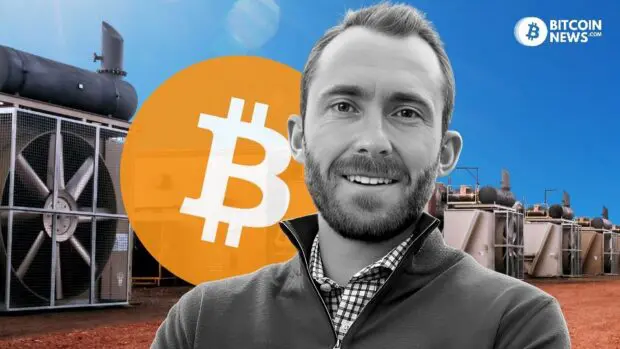The energy operating company, XCL Resources, has decided to employ digital flare mitigation (DFM) technology, a feat aimed toward powering Bitcoin mining with excess gas.
A New Solution to an Old Problem
In a groundbreaking development, power-guzzling activities like Bitcoin mining are addressing a significant challenge in the energy sector: the limited capacity for natural gas utilization.
XCL Resources, as an energy operator, usually produces an average of between 40 MMcf/d and 50 MMcf/d of gas in areas with limited takeaway capacity, like Utah’s Uinta Basin. However, the company is only able to send a portion of that through the pipelines, and excess gas traditionally gets flared into the atmosphere. XCL, led by President and COO Blake McKenna, sought a sustainable solution for this environmental concern.
Related reading: Is Bitcoin Mining Really That Bad for the Environment?
XCL Partnership with Crusoe Energy
A recent report by Hart Energy revealed that the company has partnered with Crusoe Energy. The two would be working together on a pilot project that utilizes DFM technology to power mining of Bitcoin with excess gas through a “digital pipeline.”
McKenna revealed that his company struck a deal with Crusoe in late 2022, and by May, they were all set on a pilot site, named Satoshi, with all the equipment. In August, the two announced a second site, called Hash Pad, which is expected to be up and running by the end of November.

James Keeton, XCL’s director of production, highlighted the versatility of Bitcoin mining in monetizing waste gas. He stated:
“You can take a stranded asset, such as a group of wells, without access to a pipeline, move bitcoin mining equipment to that location, and then you use it to monetize something that would have otherwise been considered a waste product remotely, without having to lay a gas-gathering pipeline.”
McKenna sees mining of Bitcoin as a cost-effective alternative to traditional pipeline infrastructure, allowing for more agile gas and oil well drilling. According to him, this approach competes with the traditional midstream sector, fostering innovation and healthy competition.
McKenna added:
“It makes the chance that we go after and drill new gas or oil wells more likely… I can just go drill my wells and make a deal with a company like Crusoe to handle the produced gas through a digital pipeline.”
Related reading: 5 Reasons Digiconomist’s Bitcoin Mining Models Are Really Bad
Technology Behind the Digital Pipeline
Crusoe’s digital flare technology captures wasted natural gas and converts it into electricity. Cully Cavness, Crusoe’s co-founder and president, emphasized the efficiency of combining stranded gas with power-intensive activities like Bitcoin mining and AI computing. This solution mitigates the global flaring problem by reducing waste and methane emissions.
Cavness sees digital flare mitigation technology as an effective solution to the world’s 10 Bcf/d flaring issue. He explains that Crusoe doesn’t charge operators for their technology; instead, they enter into purchase agreements for the gas, which is used to power computing assets. The company can deploy Bitcoin mining and/or AI computing at pad sites, adapting data center designs to the specific demands of each application.
This innovative approach not only resolves the challenge of stranded gas but also offers a sustainable revenue stream for energy operators like XCL. Beyond oil and gas, Crusoe is exploring similar solutions for the renewable energy sector, Cavness said.
Related reading:










